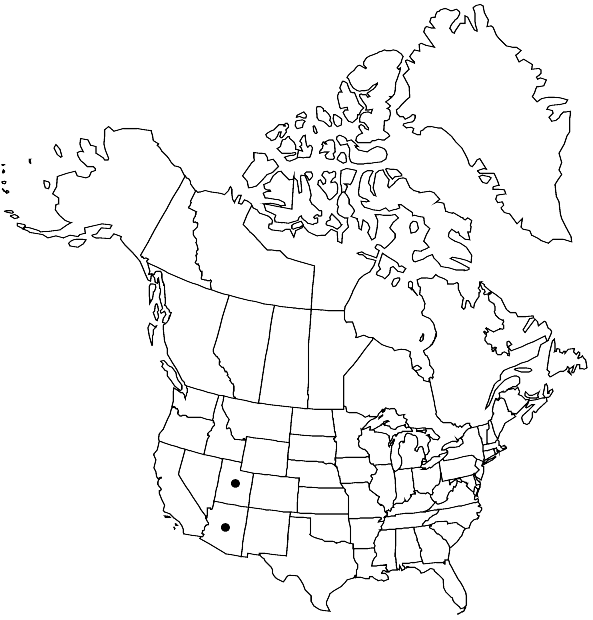Entosthodon wigginsii
Bryologist 41: 36, figs. 1–8. 1938,.
Plants 2–5 mm, yellow green, the main axis often arising from a fleshy rhizome. Leaves shriveled and distorted when dry, obovate to oblong-spathulate, imbricate, somewhat concave, mostly 2–3 mm; margins serrulate by projecting ends of thin-walled cells; apices acute, sometimes with a short apiculus; costa ending 4–6 cells before the apex; basal laminal cells rectangular (85–120 × 25–30 µm), distal cells irregularly polygonal to hexagonal or oblong-rectangular, a little longer but not otherwise differentiated at the margins. Seta brownish basally and paler distally, 5–8 mm, straight, not hygroscopic. Capsule pyriform to elongate-pyriform from an apophysis about half the total length, 1.5–2 mm, becoming sulcate when dry and empty; exothecial cells thickened, narrowly oblong and transversely elongate in 4–5 rows proximal to the mouth; operculum planoconvex; peristome double, exostome teeth bright red becoming paler at the tip, lanceolate with 7–8 articulations, obliquely striate basally, papillose at the tips, endostome well developed from a pale basal membrane bearing irregular segments. Calyptra cucullate, long-beaked, inflated around the capsule, large, smooth. Spores 20–24 µm, bacculate-insulate often in persistent tetrads at maturity.
Habitat: Fine soil, crevices of rocks, base of cliffs
Elevation: moderate to high elevations
Discussion
Selected References
None.
